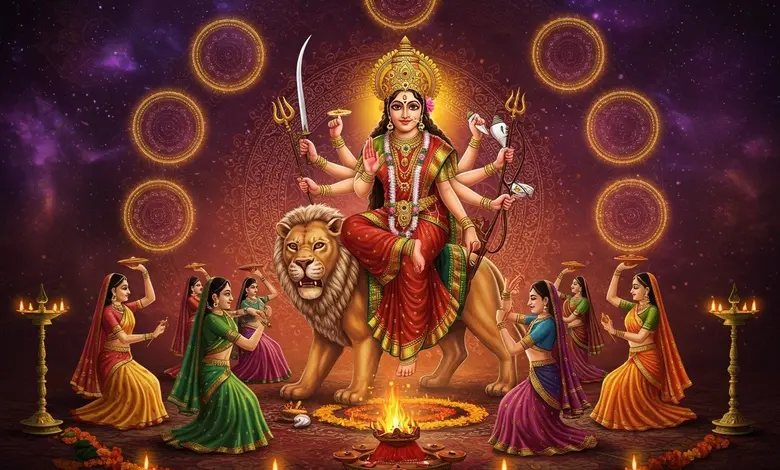As the auspicious period of Shardiya Navratri approaches, devotees prepare to honor Maa Durga through a nine-day ritual of worship and devotion. Each of these days holds profound significance, marked by the veneration of the goddess in her distinct forms, accompanied by the tradition of presenting specific offerings, or bhogs, that align with her divine preferences.
This year, Shardiya Navratri will commence on September 22 and conclude on October 1, drawing millions into a celebration of faith and renewal. Central to the observance is the belief that propitiating Maa Durga during these holy days invites her grace, bestowing happiness, prosperity, peace, and inner strength upon her followers. Rituals extend beyond prayers to include the careful preparation and offering of bhogs tailored to each manifestation of the goddess, ensuring her contentment and the fulfillment of devotees’ heartfelt wishes.
The festival unfolds over nine days, with each dedicated to one of Maa Durga’s nine forms, known as Navdurga. These offerings, rooted in ancient customs, are said to dispel ailments, foster family harmony, and ward off adversities. Below is a day-by-day guide to these revered practices, as outlined in traditions preserved across generations.
Day One: Maa Shailputri
The festivities begin with the worship of Maa Shailputri, the daughter of the mountains. Devotees offer ghee from cow’s milk, a gesture believed to invoke the goddess’s special mercy, alleviating illnesses and hardships.
Day Two: Maa Brahmacharini
On the second day, attention turns to Maa Brahmacharini, the embodiment of austerity. The traditional bhog of mishri, or rock sugar, is presented, promoting well-being and abundance within the household.
Day Three: Maa Chandraghanta
Maa Chandraghanta, adorned with a bell-shaped moon on her forehead, receives kheer as her offering. This sweet rice pudding is thought to grant mental tranquility and liberation from sorrows.
Day Four: Maa Kushmanda
The fourth day honors Maa Kushmanda, the cosmic creator. Offering malpua, a delectable fried pancake soaked in syrup, is said to eradicate all forms of suffering from one’s life.
Day Five: Maa Skandamata
Midway through the festival, Maa Skandamata, mother of Lord Kartikeya, is appeased with bananas. This simple yet potent bhog sustains positive energy and vitality throughout the day.
Day Six: Maa Katyayani
The sixth day focuses on Maa Katyayani, the warrior form. Jaggery, in its raw sweetness, serves as the bhog, symbolizing the removal of obstacles and the dawn of new opportunities.
Day Seven: Maa Kaalratri
Maa Kaalratri, the fierce destroyer of darkness, is offered coconut on this night. The act is believed to shield devotees from fears and negative forces, ushering in courage and protection.
Day Eight: Maa Mahagauri
As the festival nears its peak, Maa Mahagauri, radiant in her purity, accepts green gram or moong dal as bhog. This offering purifies the soul, enhancing devotion and spiritual clarity.
Day Nine: Maa Siddhidatri
The culmination arrives with Maa Siddhidatri, the bestower of supernatural powers. Honey, drizzled as a symbol of divine nectar, completes the cycle, fulfilling desires and granting siddhis, or accomplishments.
These time-honored offerings not only enrich the spiritual experience but also underscore the festival’s essence: a harmonious blend of devotion, discipline, and delight in the divine. As report embracing these rituals during Shardiya Navratri 2025 promises to transform prayers into profound blessings, ensuring every wish finds its way to fruition.
